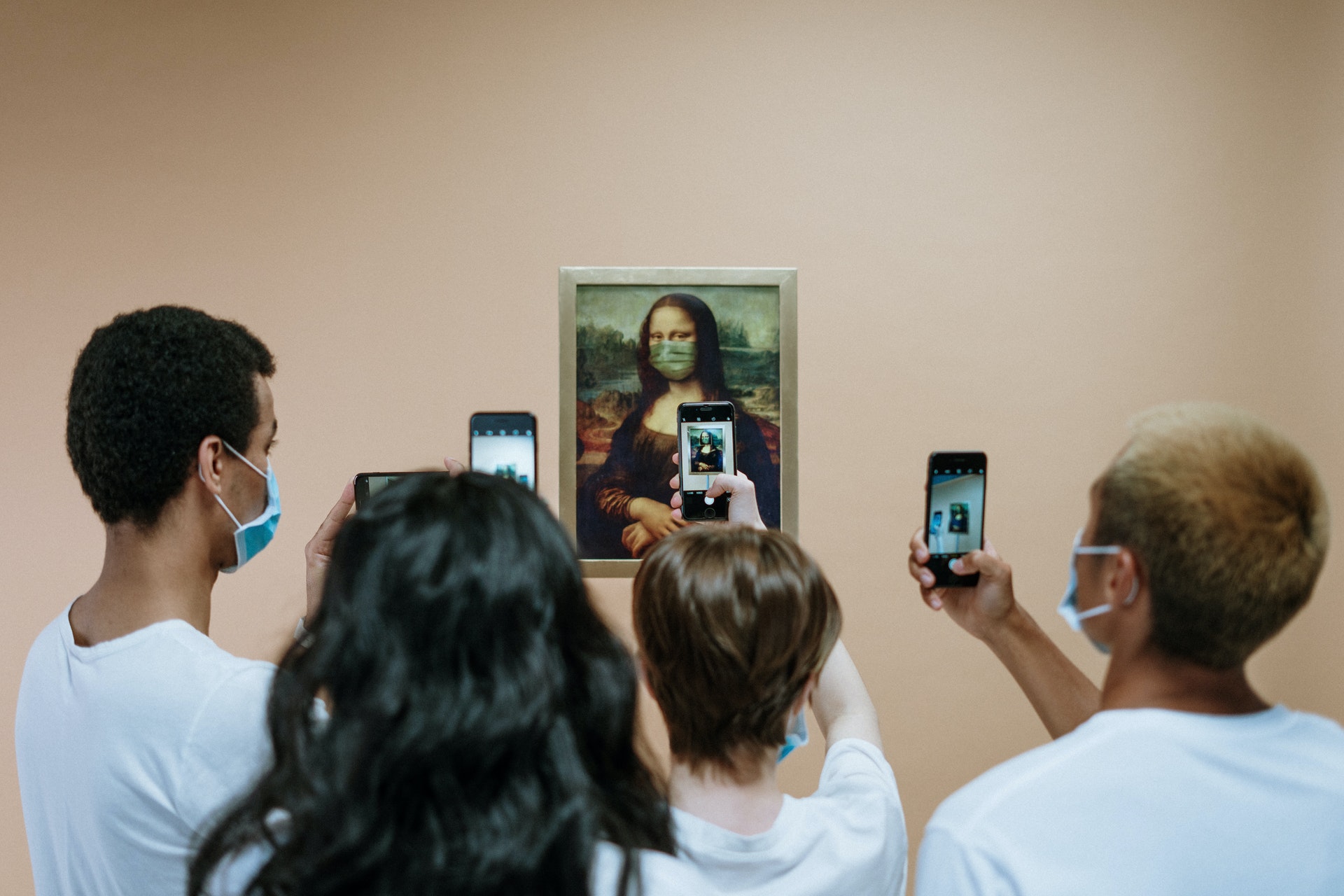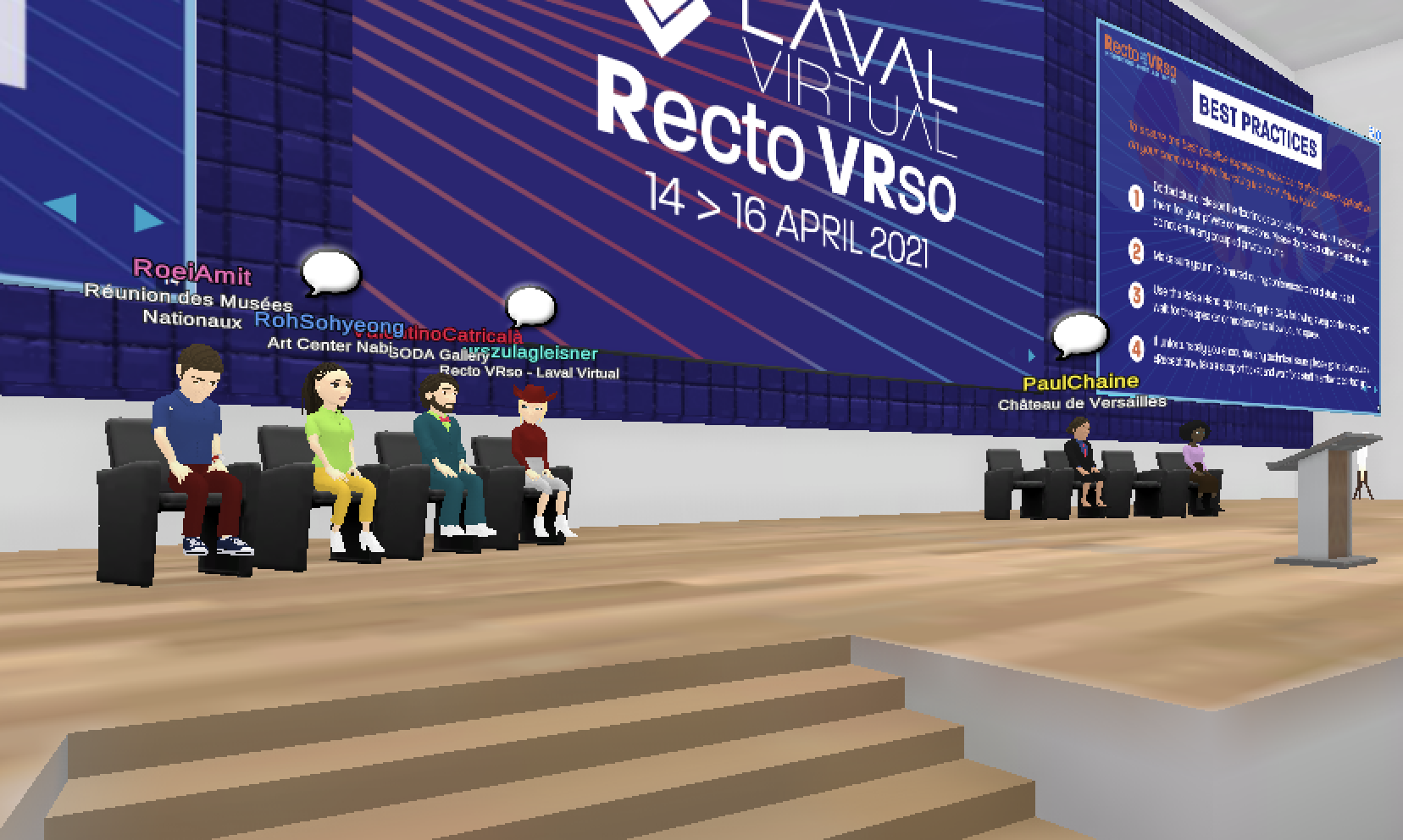
Hybrid museums and virtual exhibitions are flourishing since the health crisis.
Crédits photos : Cottonbro (Pexels)
From April 14th to 16th, 2021, the international digital art festival Recto VRso was held online in the Laval Virtual World. Many international speakers (digital artists, culture professionals…) gathered. On Thursday 15th April, Roei Amit, Paul Chaine, Valentino Catricala and Soh Yeong Roh presented their digital tools and new technologies for the creation and diffusion of artworks, and, during a panel moderated by Urszula Gleisner, they shared their experience on the emergence of hybrid museums.
Traditional museums are changing
The pandemic has turned our world upside down. Culture has been shaken to its core by the health measures. Museums had to close their doors abruptly, with only one backup solution: digital. But for some cultural institutions, the transition has been a challenge. How to offer virtual content from physical elements? How do you allow visitors to experience a place from a distance? How do you embark on an entirely virtual exhibition?
“Art galleries and exhibitions are the first victims of the Covid crisis,” first explained Roei Amit, Digital & Multimedia Manager at the Réunion des Musées Nationaux – Grand Palais. We had to think of new ways to bring culture to visitors. But what tools should we use? How can we make the most of technology? How have traditional museums been transformed during this pandemic?
The acceleration of digitization in museums
“2020 was a disastrous year in many ways, but it allowed the public to discover that museums are also active online,” noted Paul Chaine, Communications Assistant at the Palace of Versailles. With the pandemic, museums have accelerated their digital transformation. Before this crisis, some institutions did not rely on the virtual world at all. The team at the Palace of Versailles, on the other hand, has been experimenting with digital for several years.
In 2018, the first 100% virtual tour of the Palace of Versailles was conducted. Virtually Versailles is an interactive walk to discover the history of this emblematic establishment. Again in 2020, where “Versailles: the Palace is yours” was launched in partnership with Google Arts & Culture. “It’s an experience where you can discover the Palace of Versailles as it is today, thanks to photogrammetry technology,” says Paul Chaine.
Roei Amit also listed examples of recent exhibitions that have relied on XR technology for virtual tours, such as “Black & White” at the Grand Palais and “Women Painters” at the Musée de Luxembourg. The great success of the “Pompeii” exhibition is also an example of the omnipresence of new technologies in the museum world. Two future exhibitions are also planned: “Sculpture Experience” in May and “Augmented Palace”, an augmented reality art festival that will take place in June.
Towards a transformation of the visitor experience
The use of digital technologies has led to the appearance of hybrid museums. The visit is now both physical and virtual. It’s a whole new experience for visitors of cultural and artistic venues! “The virtual should not be considered as an absence of reality. We can use the virtual to reinforce the way we expand our experience of reality,” says Roei Amit. To respond to this new digital realities, RMN-Grand Palais has launched its subsidiary “Grand Palais Immersif” to produce digital exhibitions.
Virtual and real are no longer antonyms. The virtualization of the space thus allows to enrich the visit on the site. At the Palace of Versailles, “the virtual visit allows you to prepare your visit, because it is a very large and complex place“, advises Paul Chaine. The advantage of the virtual is also to be able to offer culture to all audiences. The latest experience at the Palace of Versailles can be exported to retirement homes, schools, and even prisons. “It’s important for us that everyone can have access to the castle, especially those who can’t“.

How to embrace virtual worlds?
So how do you get into the virtual? For some museums and artists, the challenge is big. The health crisis has had a huge impact, preventing people from going to the institutions, from visiting, but also from exhibiting and creating. What solutions are available to museums and artists in the face of this great upheaval?
A sudden adaptation for museums
For museums, the analysis was bitter: the sudden closure of their doors. “The impact of Covid on the Palace of Versailles was enormous. We couldn’t welcome our visitors anymore“, confides Paul Chaine. How do you bounce back when visitors can no longer come to the site? “The pandemic was a negative situation. However, we were in a certain resilience where we had to maintain contact with the public,” explains Roei Amit.
The virtual world changed the game, creating new experiences for visitors and cultural institutions alike. Museums have had to imagine different contents, for positive results! “There has been a great acceleration of digital cultural content. We have gained a lot of subscribers on our social networks,” enthuses Paul Chaine. In the end, while it was initially a monstrous challenge, the virtual quickly turned into an opportunity. “The virtual is not opposed to the real, it is part of it. And I think it’s not over yet! Soon, new possibilities will open to us“, thinks Roei Amit.
An unexpected opportunity for artists
What about artists? Their daily life has been disrupted, as well as museums. With the pandemic, they can no longer imagine and exhibit their works in the same way. Exhibitions can no longer be held in physical form. “At the beginning of the pandemic, online exhibitions were very simple,” says Valentino Catricalà, curator of the SODA Gallery. As the months have passed, artists have become more creative. “More and more people are participating in this movement. They are not afraid to create digital content,” confides Soh Yeong Roh, director of Art Center Nabi. According to Valentino Catricalà, artists are not only experimenting with technology, but they also act as vectors of technological and societal innovations.
“The era of creators has arrived!” – that’s how Soh Yeong Roh named her talk. Following the pandemic and the closure of cultural institutions and museums, artists have had to adapt. They no longer depend on cultural institutions to create works and exhibit them. Artists have become more independent in their creation but also in selling their work.
“The pandemic is an opportunity for digital artists because they can now sell their work,” says Soh Yeong Roh. Blockchain technology is a huge step forward for digital artists. “Blockchain is a transparent, secure information storage and transmission technology. By extension, a blockchain constitutes a database that contains the history of all exchanges made between its users since its creation” (source: Blockchain France). In the artistic field, the blockchain makes it possible to trace the path of a work in a 100% transparent way and thus to ensure its authenticity.
Thus, the technology has given rise to hybrid museums and has profoundly transformed the work of digital artists. “The future will be hybrid. But at the same time, we cannot endure living in a virtual world; we need physical exhibition,” admits Valentino Catricalà. For Paul Chaine, “digital and virtual reality allow to keep the link with the public, but they are not replacement tools“. This is why museums must prepare to become hybrid, not 100% virtual, in the future.

